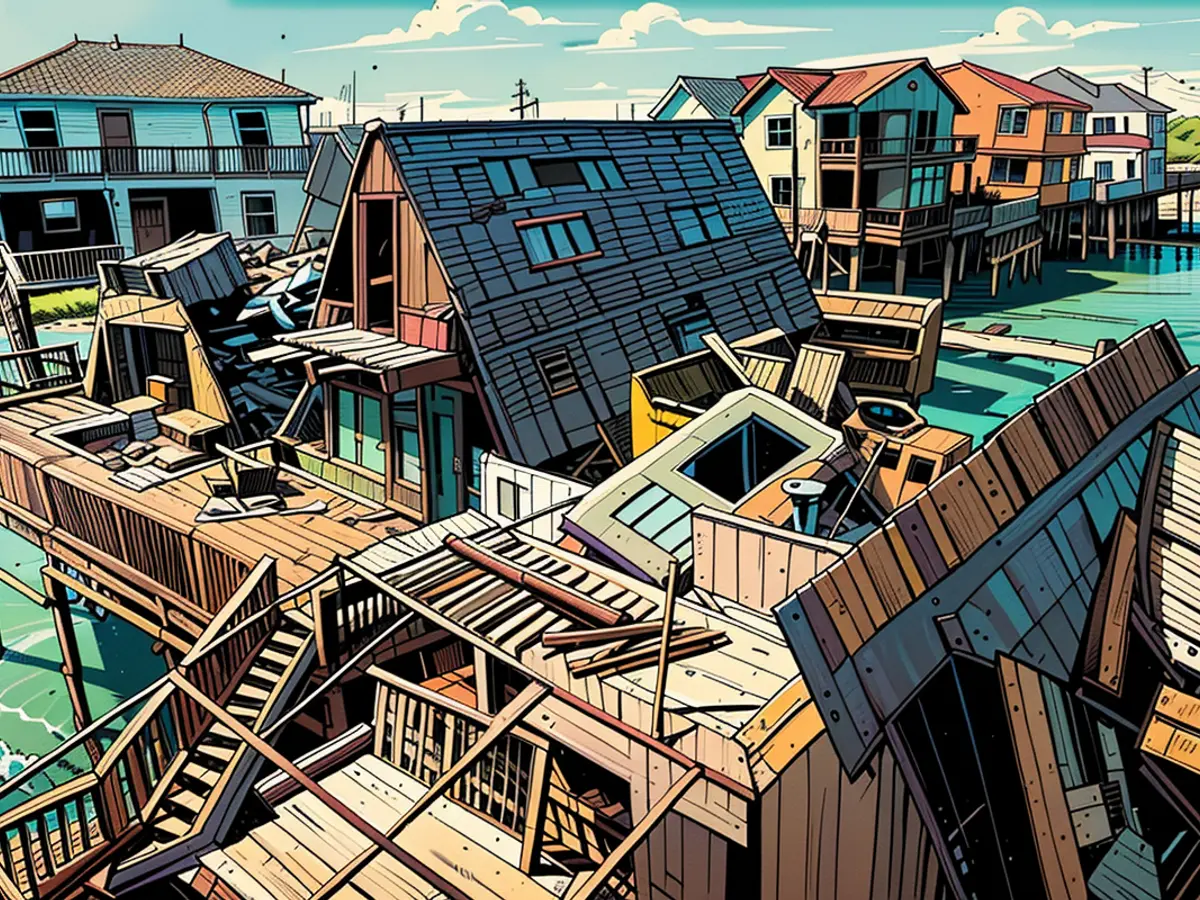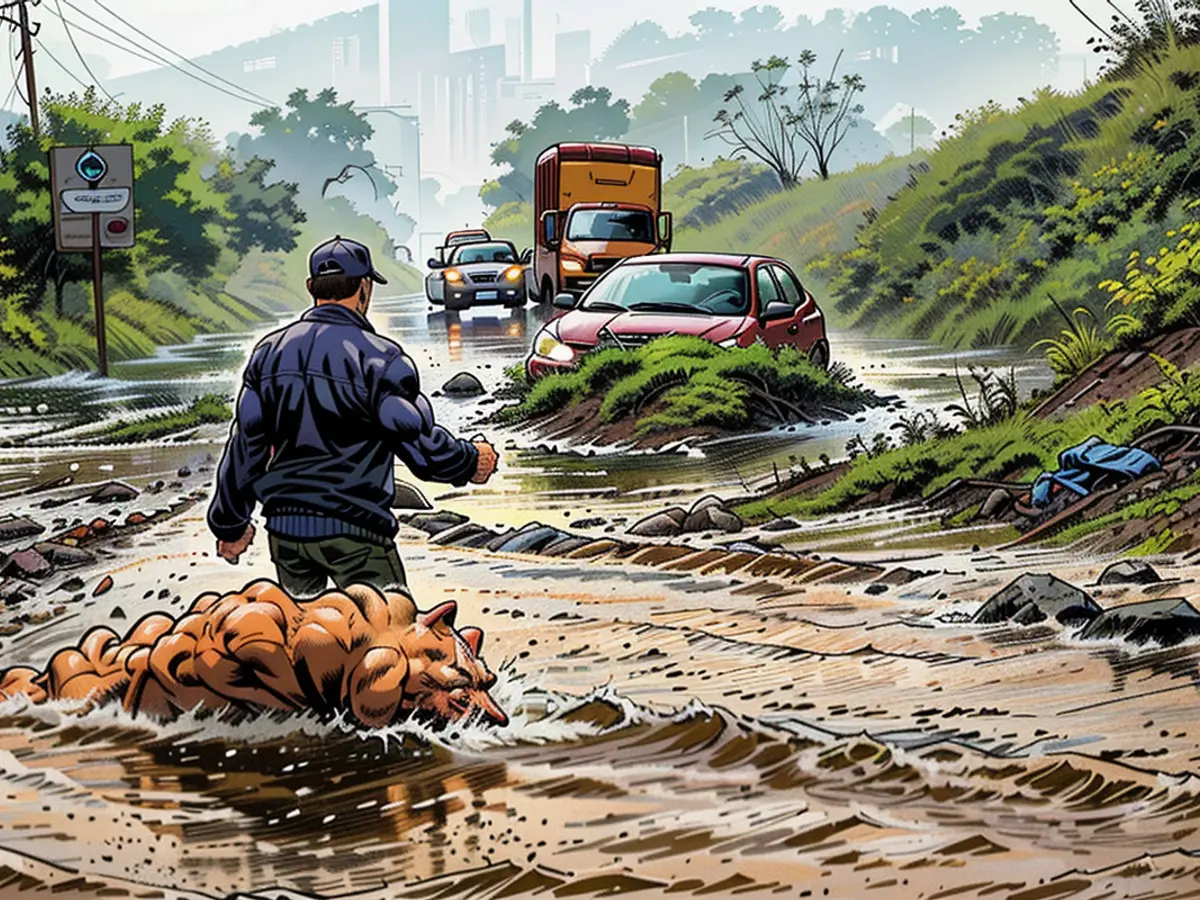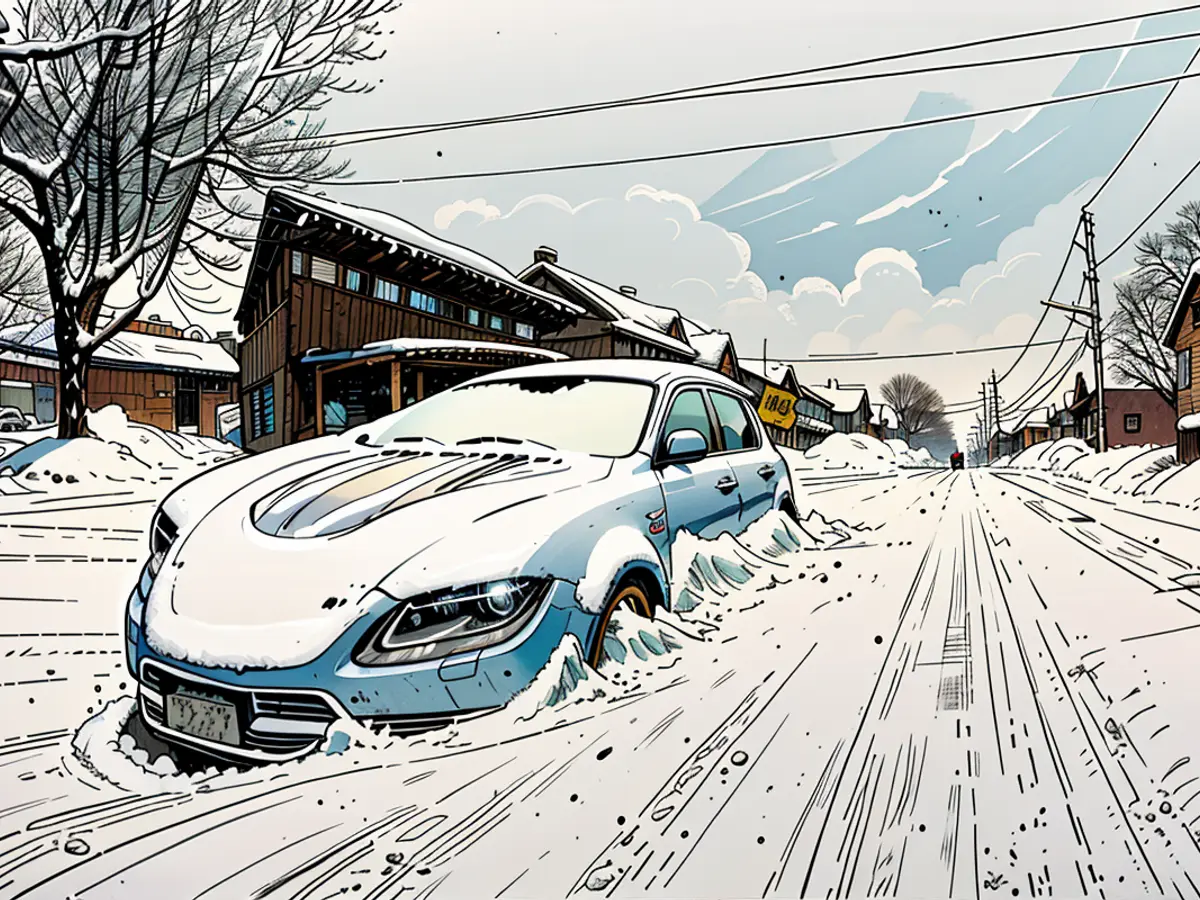Miserable heat threatens millions of Texans who remain without power in the wake of storm Beryl
Restoring electricity across the region is expected to take days – and in some cases weeks – after Beryl tore through the state Monday, flooding coastal communities, shredding homes and ripping down webs of power lines.
Homes have become saunas and food languishes in warm refrigerators as about 1.7 million homes and businesses are still without power across southeast Texas, mainly from Galveston to north of Houston, according to PowerOutage.us. Phone and internet access has also been cut off in some communities, including Galveston.
“No WiFi, no power, and it’s hot outside. That’s dangerous for people. That’s really the big issue,” resident Robin Taylor told the AP. “People will die in this heat in their homes.”
Beryl has been blamed for at least 10 deaths in Texas and Louisiana, mainly from fallen trees. However, two deaths in Houston’s Harris County were the result of carbon monoxide poisoning, Texas emergency officials said, prompting warnings about the dangers using generators in areas where families are living and sleeping.
Cooling centers have opened across the region as temperatures creep into the 90s and heat indices reach 105 degrees in some areas. The heat index is a measurement of how the body feels under both heat and humidity.
Prolonged heat exposure poses significant health risks for people without adequate cooling and may be especially dangerous for Texans working outdoors to clear debris or damaged infrastructure. Heat also presents increased risks for the elderly, people with chronic medical conditions, homeless people and children.
Hospitals in Houston are at risk of overcrowding as they are unable to release patients to homes without power, prompting city officials to organize overflow beds in a sports stadium, Lt. Governor Dan Patrick said Tuesday.
Long lines of cars and residents snaked out of fast food restaurants, food trucks and gas stations in the hopes of getting a few minutes of cool air or a bite to eat, according to the AP. Dwight Yell, 54, had power at his house but took a disabled neighbor, who did not, to Denny’s for some food, the outlet reports.
Patrick said he has stressed to CenterPoint Energy, the utility with the vast majority of outages in the area, the importance of restoring power as quickly as possible. The utility estimates about 80% of its customers in Houston are without power.
“It’s tough to be in the heat. It’s tough now to be able to refrigerate anything and tough not being able to go out and get food,” Patrick said. “I made sure that CenterPoint was aware of that and asked them to pull out all the stops to get power back as quickly as they could.”
But CenterPoint officials say it could be several days before power is fully restored to its customers, though it hopes to restore service to 1 million customers by Wednesday night. As of Tuesday night, more than 1.3 million of its customers were still in the dark.
President Joe Biden approved a federal emergency disaster declaration that will assist with some recovery costs, including clearing debris, Texas Governor Greg Abbott’s office said.
But before long-term recovery efforts get underway, many frustrated residents are grappling with how to address their immediate needs.
“It’s catastrophic when you lose everything in your fridge and you are living check to check,” Harris County commissioner Lesley Briones told the AP.

Beryl barrels into Northeast
Though Beryl has substantially weakened since slamming into Texas as a Category 1 hurricane, its remnants still pose serious flood and tornado threats as they blow through the Ohio Valley and Northeast on Wednesday.
“On Wednesday, Beryl will continue northeastward through Ohio and into Ontario and rainfall will increase over northern areas of New York into New England,” the National Weather Service said.
More than 2 million people are under flood watches across parts of the Midwest and Northeast. The watches will begin to expire for the Midwest by the end of the day Wednesday but will last in New England until Thursday morning.
Heavy rainfall and winds could also churn up tornadoes, with the biggest threat spreading from northern Pennsylvania to southern New Hampshire and Vermont. That includes Syracuse and Albany, New York, and Scranton, Pennsylvania.
Beryl whipped up more than a dozen tornadoes across Texas, Arkansas and Louisiana on Monday and two in Indiana and Kentucky on Tuesday. The National Weather Service in Shreveport, Louisiana, issued 67 tornado warnings on Monday, the most it has ever issued in a single day.
CNN’s Robert Shackelford, Joe Sutton, Sarah Dewberry and Fabiana Chaparro contributed to this report.
The heat indices are reaching dangerously high levels, making homes uncomfortable and food spoilage a concern for many without power. According to the weather forecast, Beryl's remnants are expected to bring heavy rainfall and potential tornadoes to the Northeast on Wednesday.








